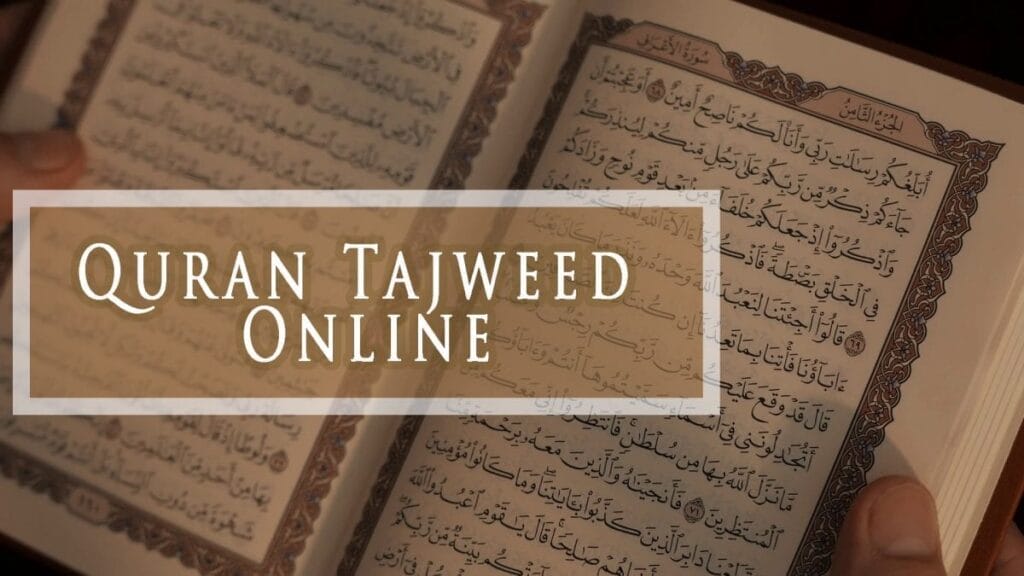The Importance of Learning rules of Quran Tajweed, and how to start?
On normal, people frequently take a few months to a year of reliable and devoted think about to accomplish a great level of capability in Tajweed. Be that as it may, it’s basic to see Tajweed learning as a nonstop travel, with continuous hone and refinement indeed after accomplishing a certain level of competence. Customary and centered exertion, along with direction from learned mentors, essentially contributes to the speed and viability of learning Quran Tajweed.
What is the Importance of Learning Quran Tajweed?
Quran Tajweed is fundamental as it extends one’s association with the Quran, protecting its realness and cultivating a significant otherworldly involvement. By following Tajweed rules, Muslims honor the divine content and encounter a transformative travel that rises above unimportant recitation. Through legitimate elocution and adherence to Tajweed, people not as it were to interface more profoundly with the implications of Quranic verses but also contribute to the preservation of this timeless scripture.
Learning Tajweed is critical and indeed basic and it is not fair an aptitude; learning Quran Tajweed is a sacrosanct travel that develops one’s association with the Quran.
By following the rules of Tajweed, Muslims not as it were to protect the realness of the divine content but moreover involve a significant otherworldly association that rises above words. The excellence and noteworthiness of Tajweed lie not as it were in the redress elocution of letters but in the transformative control it holds for the soul of the devotee.
What is Quran Tajweed?
The Arabic word Tajweed phonetically implies ‘proficiency’ or ‘doing something well’. It comes from the same root letters as the word Jayyid, which implies ‘good’. When connected to the Quran, it implies giving each letter of the Quran its rights and contribution of characteristics when we present the Quran, and watching the rules that apply to those letters in diverse circumstances. We provide the letters their rights by watching the basic characteristics of each letter. We provide them their levy by watching the characteristics of each letter that are displayed in them a few of the time and not displayed at other times.
Quran Tajweed covers the rules on how Arabic letter sets ought to be articulated, places to stop, halt, or keep going amid Quran recitation, when to stretch the elocution of a letter set, etc. It covers the characteristics of Arabic letter sets and how they are connected with each other such that they can take diverse shapes.
What are the basic Quran Tajweed rules ?
It’s basic to learn Quran Tajweed to be able to understand the Qur’anic verses. It might be learned through showing behind your favorite reciter. Since learning Tajweed needs home. Our adored prophet (peace and favoring be upon him) said:
“The one who was committed to the Qur’an will be told on the Day of Revival: ‘Recite and rise (in positions) as you utilized to recount when you were in the world. Your rank will be at the final Ayah you recite.”
We will converse around the basic Quran Tajweed rules to coordinate you along your learning travel. So here they are:
But some time recently we specify the primary rules to begin with you must get the meaning of Ghunnah. Ghunnah is a nasal sound that is created to articulate particular letters like the letters M and N. When you attempt to articulate them while holding your nose you will feel the vibration. That is what Ghunnah implies.
-
Noon Sakinah and Tanween.
When finding a twelve Sakinah or the tanween sign that implies that you ought to make the sound ‘nnn’ when articulating the word.
-
Izhaar (to make it clear).
The twelve is articulated without making the nasal sound (Ghunnah) when finding any of the taking after letters taken after by twelve Sakinah or Tanween: [ء ه ع ح غ خ].
-
Idghaam (to combine).
There are two sorts of Idghaam. Idghaam with Ghunnah: which is utilized if you found any of the letters ي ن م و some time recently twelve Sakinah or tanween. At that point you will apply the Guhnnah to the letter that takes after twelve Sakinah or Tanween.
Idghaam without Ghunnah: which is utilized if you found any of the letters ر or ل some time recently twelve Sakinah or tanween. You will skip the tanween or twelve Sakinah and articulate the taking after letter without Ghunnah.
-
Iqlaab (to change over)
Iqlab alludes to turning the Ghunnah into Meem when finding the letter ب after twelve Sakinah or tanween. And articulating the letter ب after it.
-
Ikhfaa (to stow away)
If any letter other than the letters we specified over is found at that point Twelve Sakinah or Tanween is not articulated but the Ghunnah is connected. And the level of Ghunnah depends on the letter that is taken after.
-
Twelve and Meem Mushaddad.
This run the show is connected if you discover a shadda on the twelve or meem letters. And a two-beat Ghunnah is articulated.
-
Meem Sakinah.
This run the show is connected when finding the Sukoon sign.
-
Ikhfaa Shafawy.
This tajweed run the show is connected when the meem Sakinah is taken after by the letter “ب”, at that point you ought to apply the Ghunnah and not articulate the meem Sakinah.
-
Idghaam Shafawy.
If a meem is taken after with a meem Sakinah at that point the two words are consolidated and a Gunnah is connected, like the taking after illustration:
أَطْعَمَهُم مِّن جُوعٍ = At’A’mahummminnn jooain
-
Izhaar Shafawy.
If any other letter than meem takes after a meem Sakinah this tajweed run the show is connected. Don’t blend the words and articulate the Meem letter.
-
Qalqalah.
Qalqalah implies making a reverberating sound when articulating particular letters. The Qalqalah letters are: [ق ط ب ج د]. Based on the put of the Qlaqalah letters the length of the resounding sounds contrast. If one of the letters is found in the center of the word a speedy reverberate is made. If it’s found at the conclusion of the word and you will halt on it at that point the reverberating sound is more grounded. If the halting word has a Qlqalah letter and a shadda at that point it will be more grounded.
-
Tajweed Madd rules.
Madd alludes to extending the letter more than its ordinary articulation. The Madd letters are: [ا و ى]
The process of learning Quran Tajweed
The process of learning Tajweed itself involves so many benefits; It purifies the soul and helps the Muslim to feel the words of Allah (SWT) not just reading or understanding its linguistic meaning.
the initial steps of learning Tajweed
– Regular Recitation of the Quran Tajweed: Practice consistently reading the Quranic text using Quran Tajweed rules.
– Listening to Quranic Recitations: Listen to the Quran being recited on radio broadcasts or by skilled Qaris (reciters) who accurately apply Tajweed rules.
– Using a Tajweed-Formatted Mushaf: Use a Quranic text designed with color-coded Tajweed markings. This makes it easier for the reader to apply the practices during recitation.
At the end of the article, we learned that the rules of Quran Tajweed are a crucial part of the process of learning how to read and recite the holy Quran. This is why it should be necessary while searching to learn the Quran with Tajweed online classes with Hekma Academy, so for more information please contact us.






